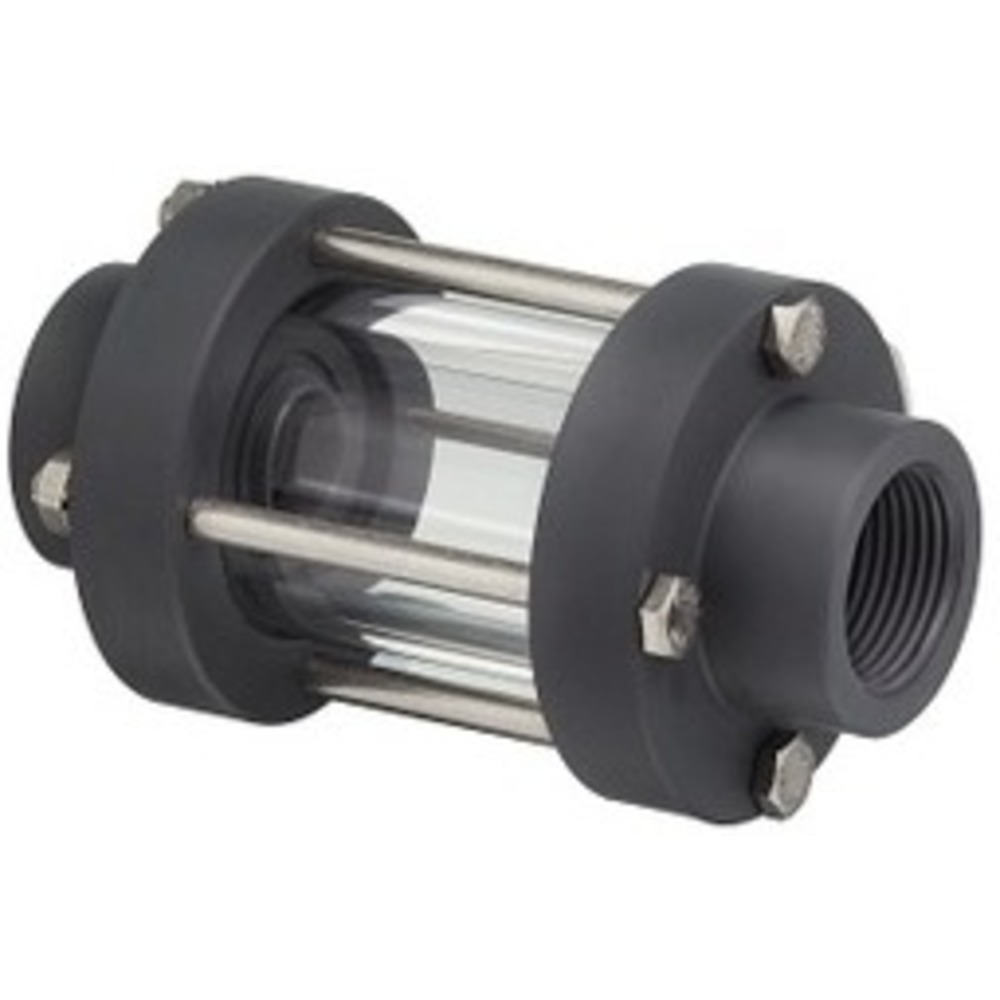Plast-O-Matic GX050EP-PV sight glass from True Blue GX Series is intended to show the clarity and presence of the liquid in a piping system.
Working Mechanism:
- When placed correctly, this PVC sight flow indicator operates automatically and needs little to no maintenance.
- Without the use of fluttering devices, the flow indicator can simply indicate the flow of turbulent liquids.
- It could be challenging to observe the flow in clear or opaque liquids that aren't turbulent and don't have entrained air bubbles.
- In this situation, a Plast-O-Matic fluttering mechanism within the cylinder will signal liquid movement.
Features:
- Plast-O-Matic GX050EP-PV sight glass has a single clear acrylic cylinder wall to indicate clarity or flow of ultra-pure liquids, such as demineralised water.
- The model can also be used with corrosive chemicals compatible with acrylic material.
- It features PVC constructed ends with either FKM or EPDM seals and comes fully ported to reduce any possible flow resistance.
- This PVC sight glass unit comes with an O-ring seal for perfect sealing both at high & low pressures.
Frequently Asked Questions:
Q. How to install this PVC sight glass flow indicator?
A.
- Series GX is easily threaded into a pipe system and may be placed both vertically and horizontally.
- It comes completely assembled and pre-tested.
- Only plastic fittings should be used to connect it.
- Male threads should only be hand-tightened, followed by a further one-quarter turn with a strap wrench, before being wrapped with a PTFE tape or another suitable pipe sealant.
- Greater forces have a tendency to stretch or deform the plastic that might cause it to rupture in the future.
- Avoid using pipe wrenches, locking channel pliers or vice-lock pliers since they all stress the plastic's molecular structure.
- Never attach to a metal pipe. This may tear the plastic and lead to a potential rupture in the future.
Q. Where should oil be on a sight glass?
A. The drain port is often the lowest place in the oil reservoir. It is advised to fit the oil sight glass (OSG) there. Water pollution will move to the OSG, where it may be purged from the system and separated from good-grade oils.
Q. How do you tell if a sight glass is full or empty?
A. The sight glass component is simple. It just indicates if the liquid line is completely filled with liquid or contains bubbles. If bubbles appear, a liquid / vapour mixture is present.
 Change Country
Change Country

